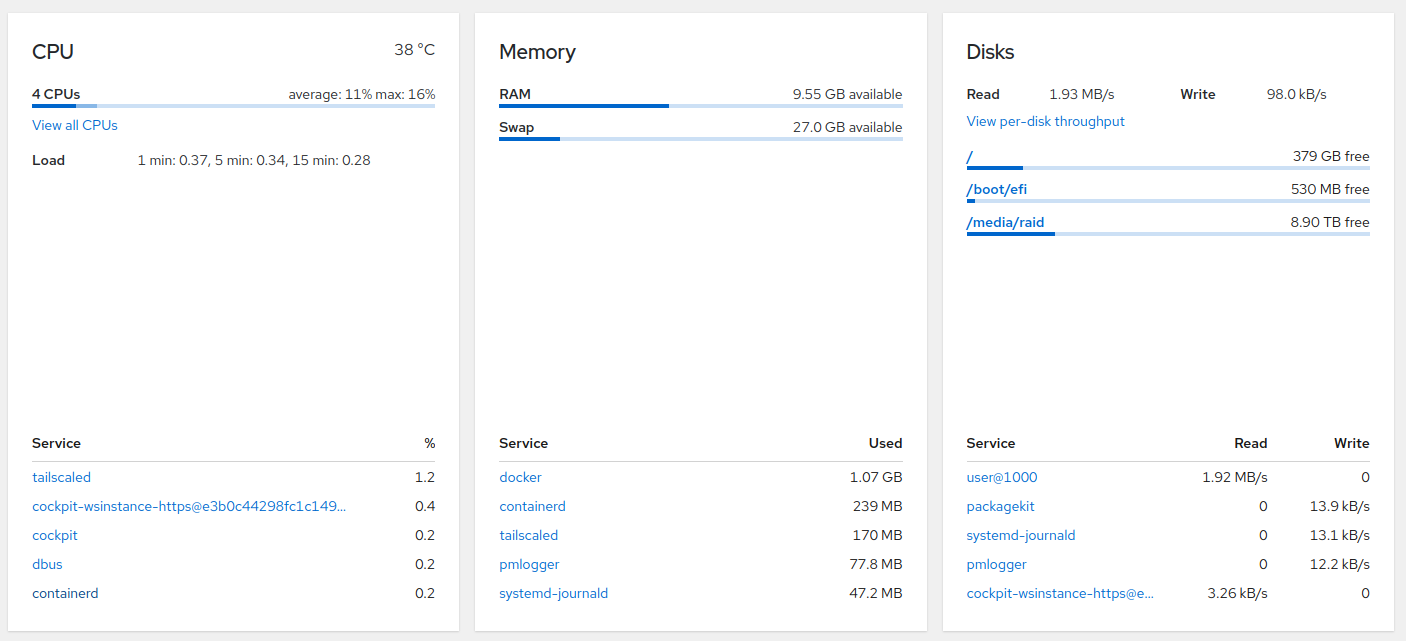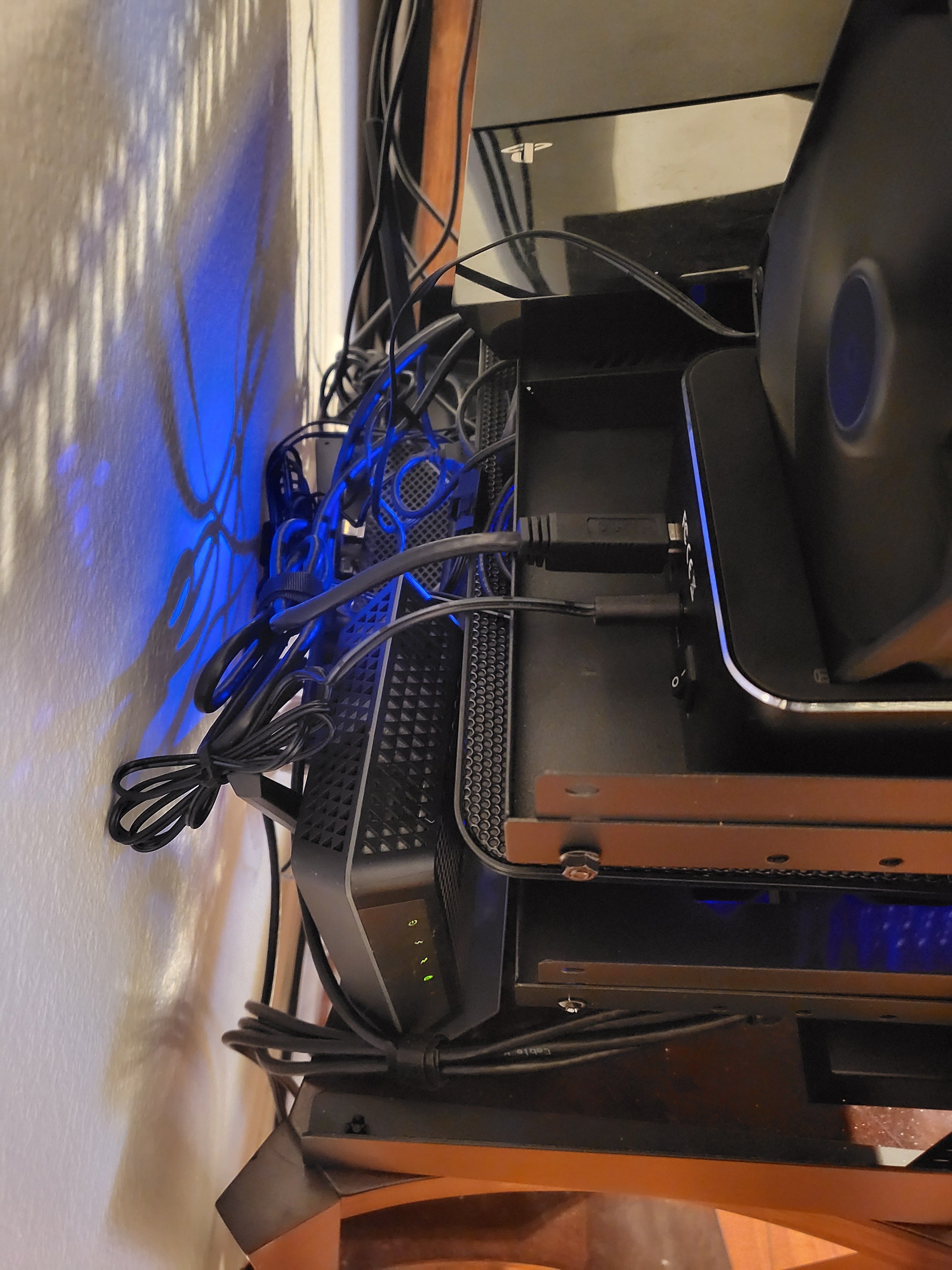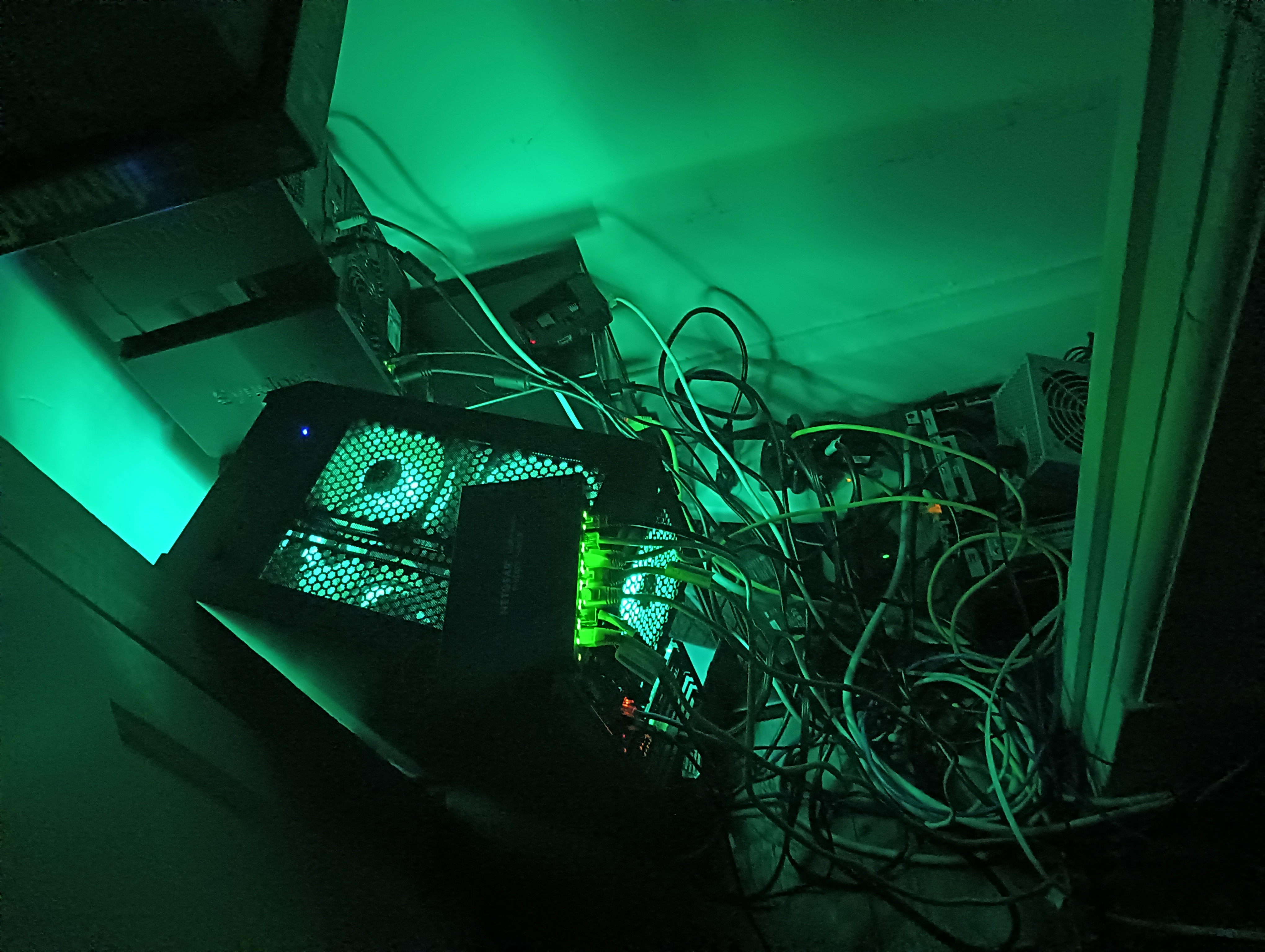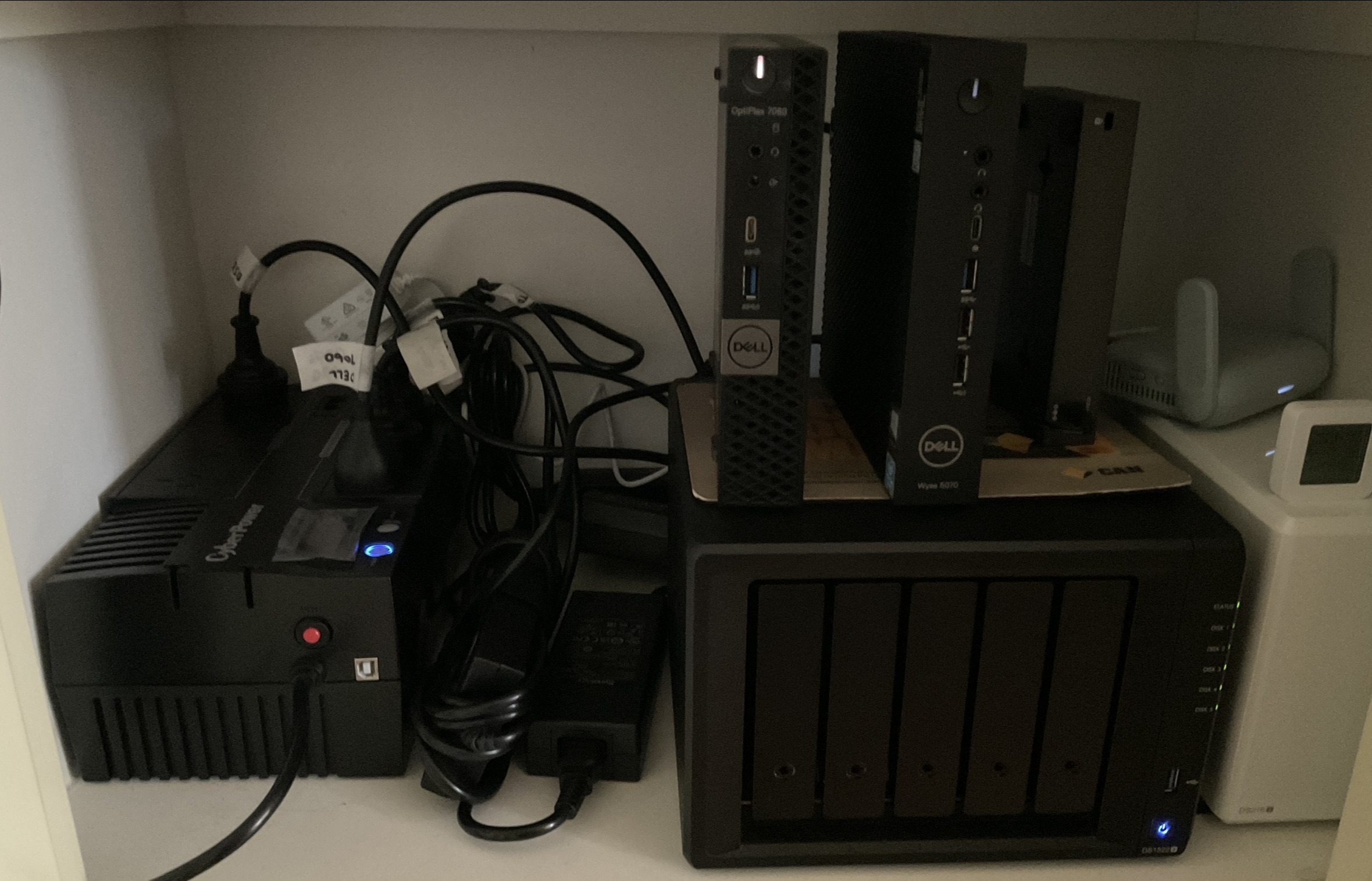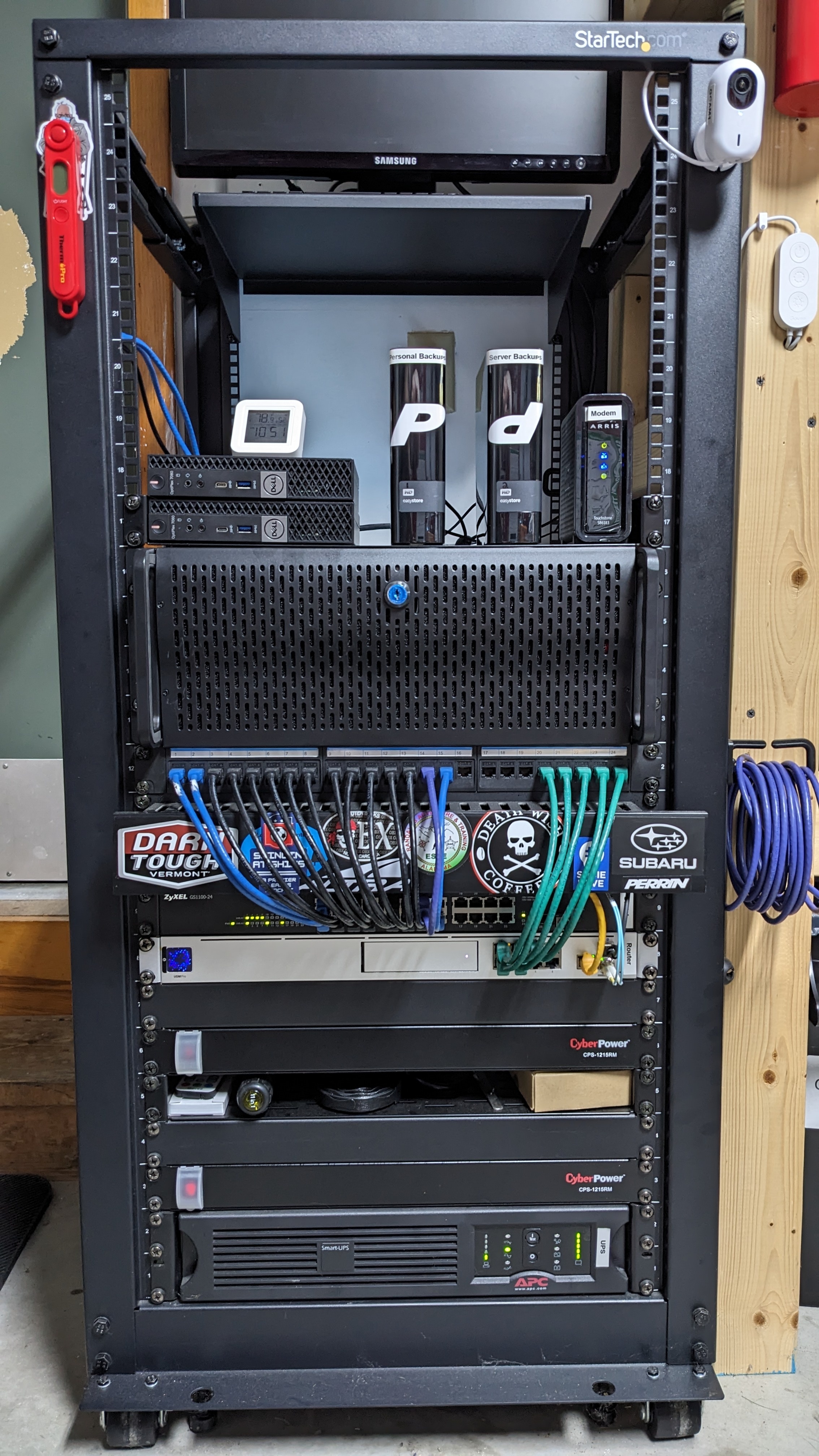
Selfhosted
A place to share alternatives to popular online services that can be self-hosted without giving up privacy or locking you into a service you don't control.
Rules:
-
Be civil: we're here to support and learn from one another. Insults won't be tolerated. Flame wars are frowned upon.
-
No spam posting.
-
Posts have to be centered around self-hosting. There are other communities for discussing hardware or home computing. If it's not obvious why your post topic revolves around selfhosting, please include details to make it clear.
-
Don't duplicate the full text of your blog or github here. Just post the link for folks to click.
-
Submission headline should match the article title (don’t cherry-pick information from the title to fit your agenda).
-
No trolling.
Resources:
- selfh.st Newsletter and index of selfhosted software and apps
- awesome-selfhosted software
- awesome-sysadmin resources
- Self-Hosted Podcast from Jupiter Broadcasting
Any issues on the community? Report it using the report flag.
Questions? DM the mods!

From top to bottom:
- Allpower Power Station (UPS with around 4 hours of battery)
- Unifi gateway
- Unifi switch
- Unify CloudKey (Surveillance)
- Patch panel
- 1.5U media server
- Arock Mini running stuff like my Lemmy instance and other self hosted software.
I’m planning to move my Lemmy instance to its own 1.5U.
The whole setup uses around 80-100 watts.
Is that actually an UPS or just a backup battery? Can it passthrough the line power directly or does the inverter need to run 24/7?
In the latter case you might want to check how much power the inverter eats just by itself. For example, my Bluetti with 2 kWh needs a whopping 50W in idle just to keep the AC ports powered. Of course your unit looks much smaller so it should be way less but still worth measuring.
It’s the Allpower R600: https://iallpowers.eu/products/allpowers-r600-portable-power-station-600w-299wh-with-lifep04-battery-1?se_activity_id=185831162163&syclid=csti70imlv4s738bo1rg
It does do actual passthrough and I also measure wattage directly from the outlet.
I just got 10 Gbit internet last week so I had a chance to tidy everything up. The ThinkCentre is the 10 Gbit router, the Synology actually hosts everything.
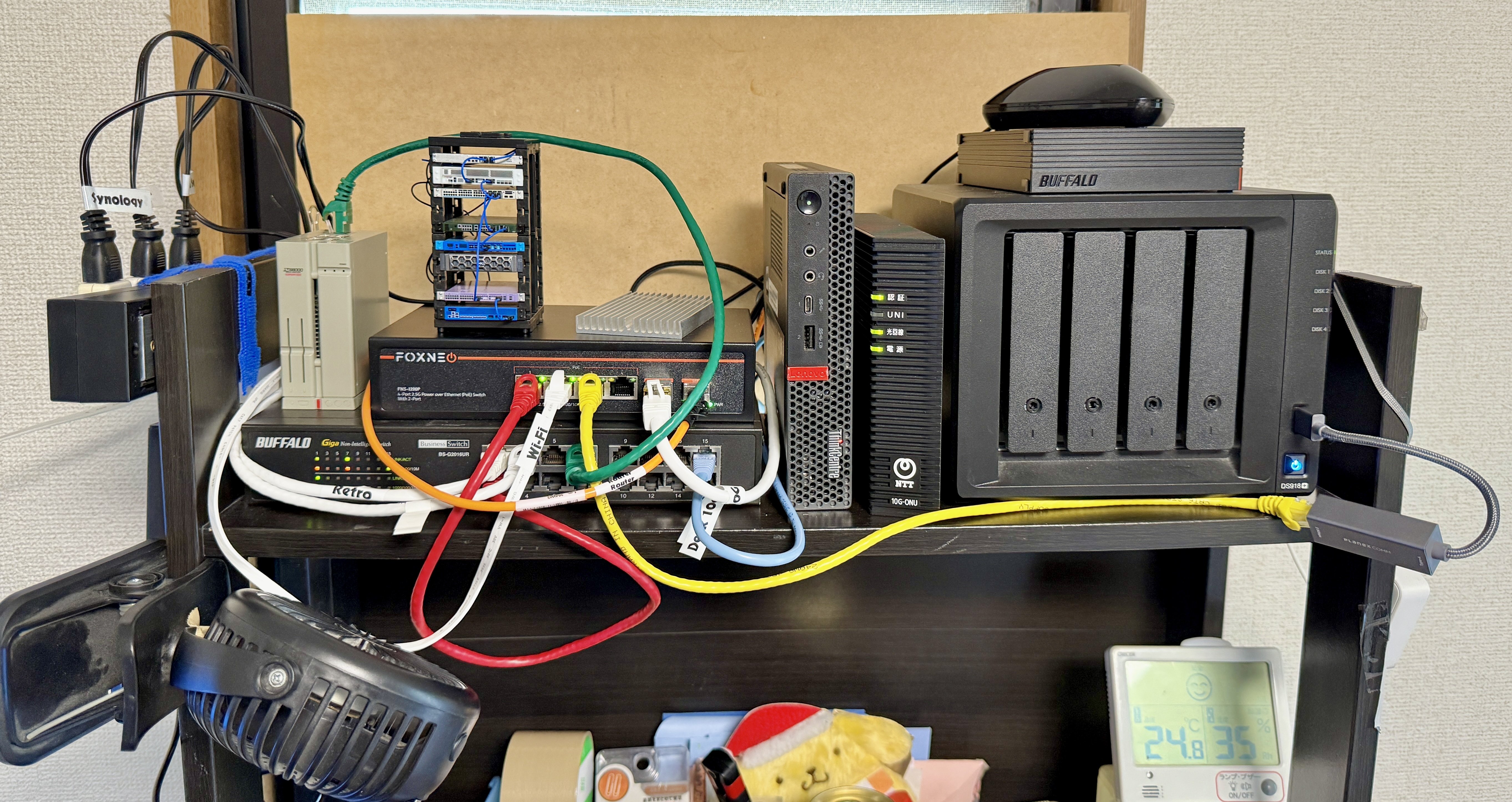
Also finally labeled all the mystery cables. Also replaced the proprietary 20V/12V bricks for the ThinkCentre and 10G Fiber ONU with USB-C adapter cables to keep things tidier.
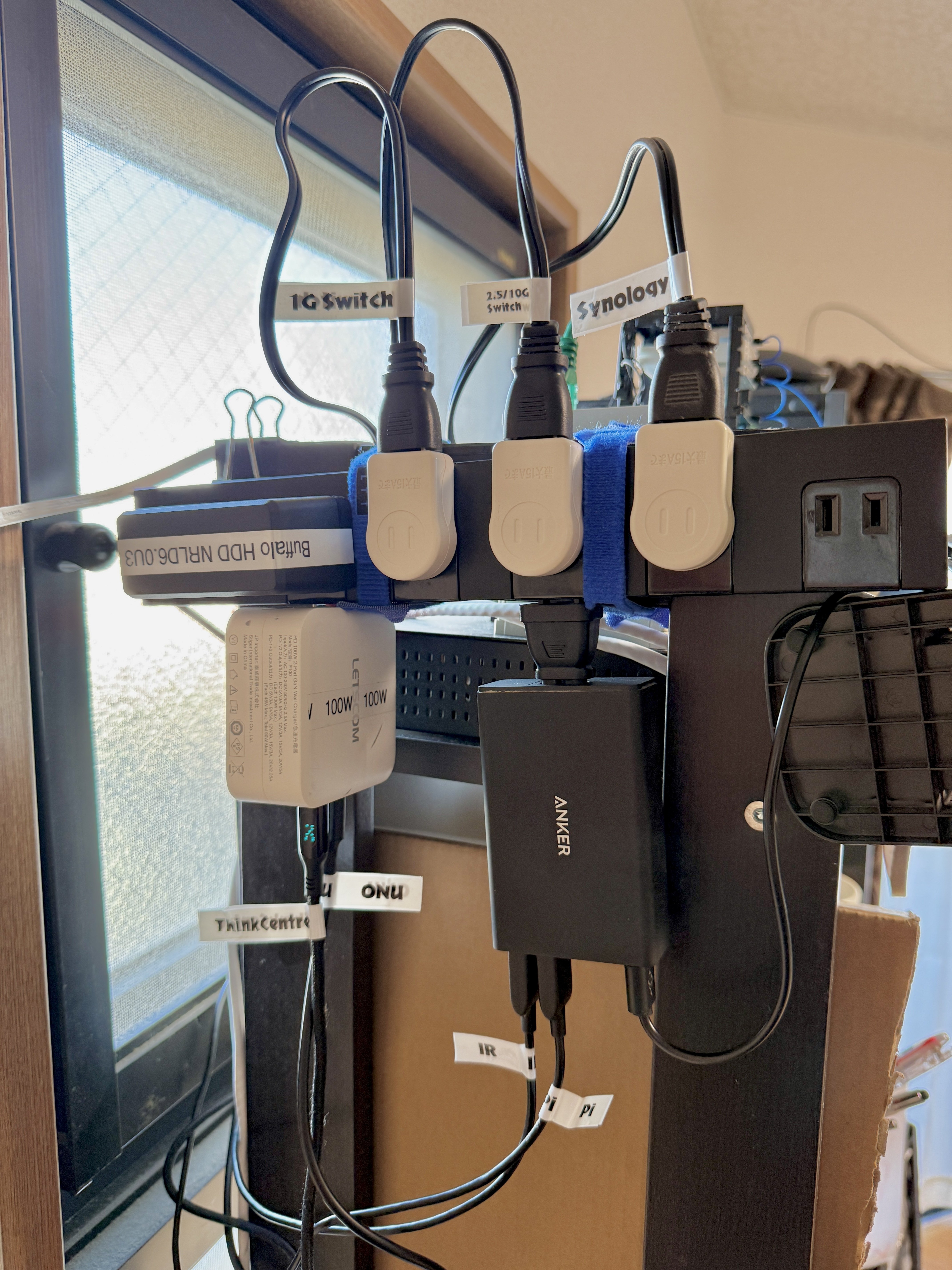
Interesting! May I ask why you use USB port on Synology for Ethernet connection instead of ports on the back? Are they 1gbit?
I'd rather not. It's literally a Dell workstation machine from the mid-2000s. It's like Wolfgang's Channel kryptonite
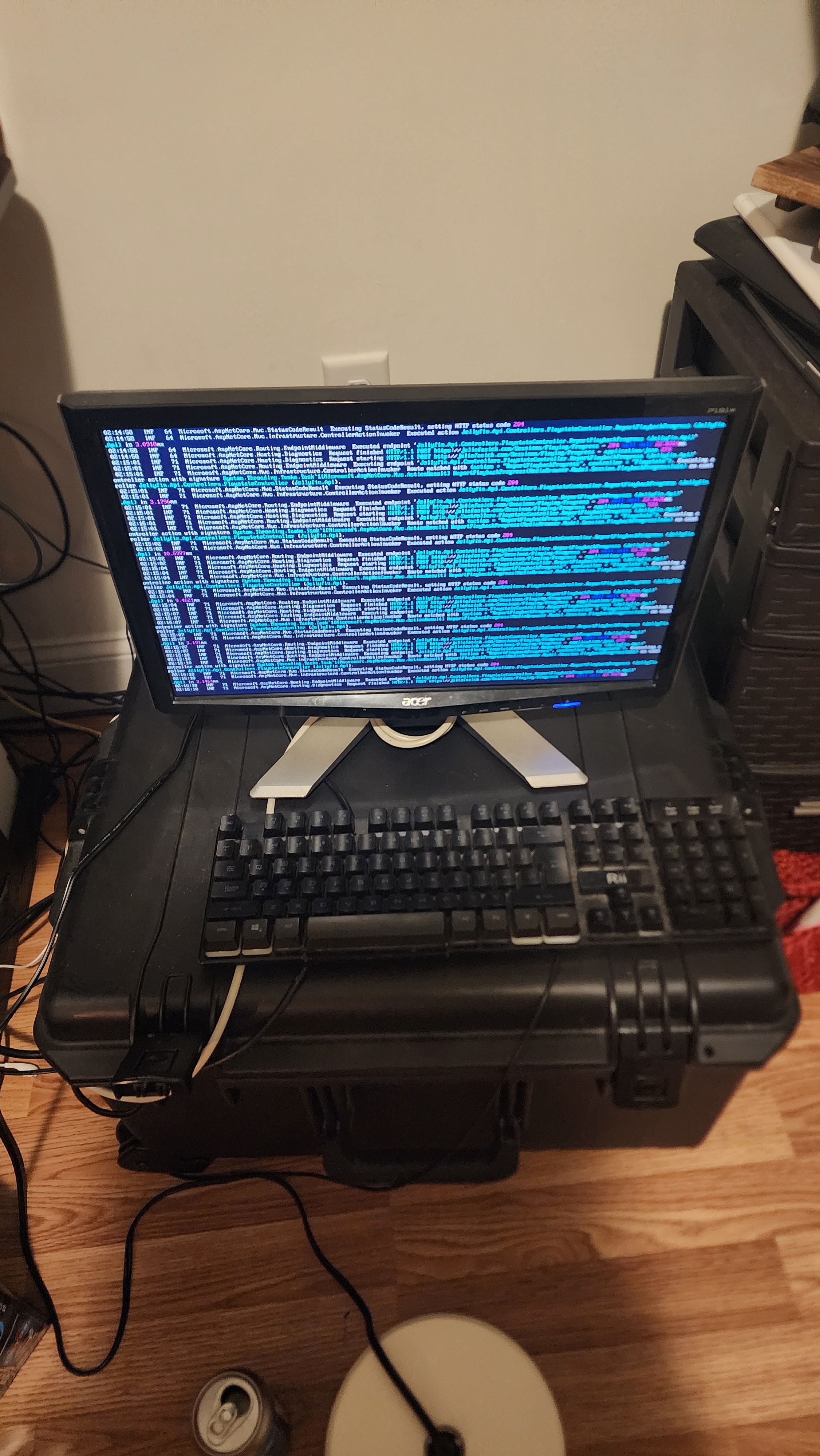
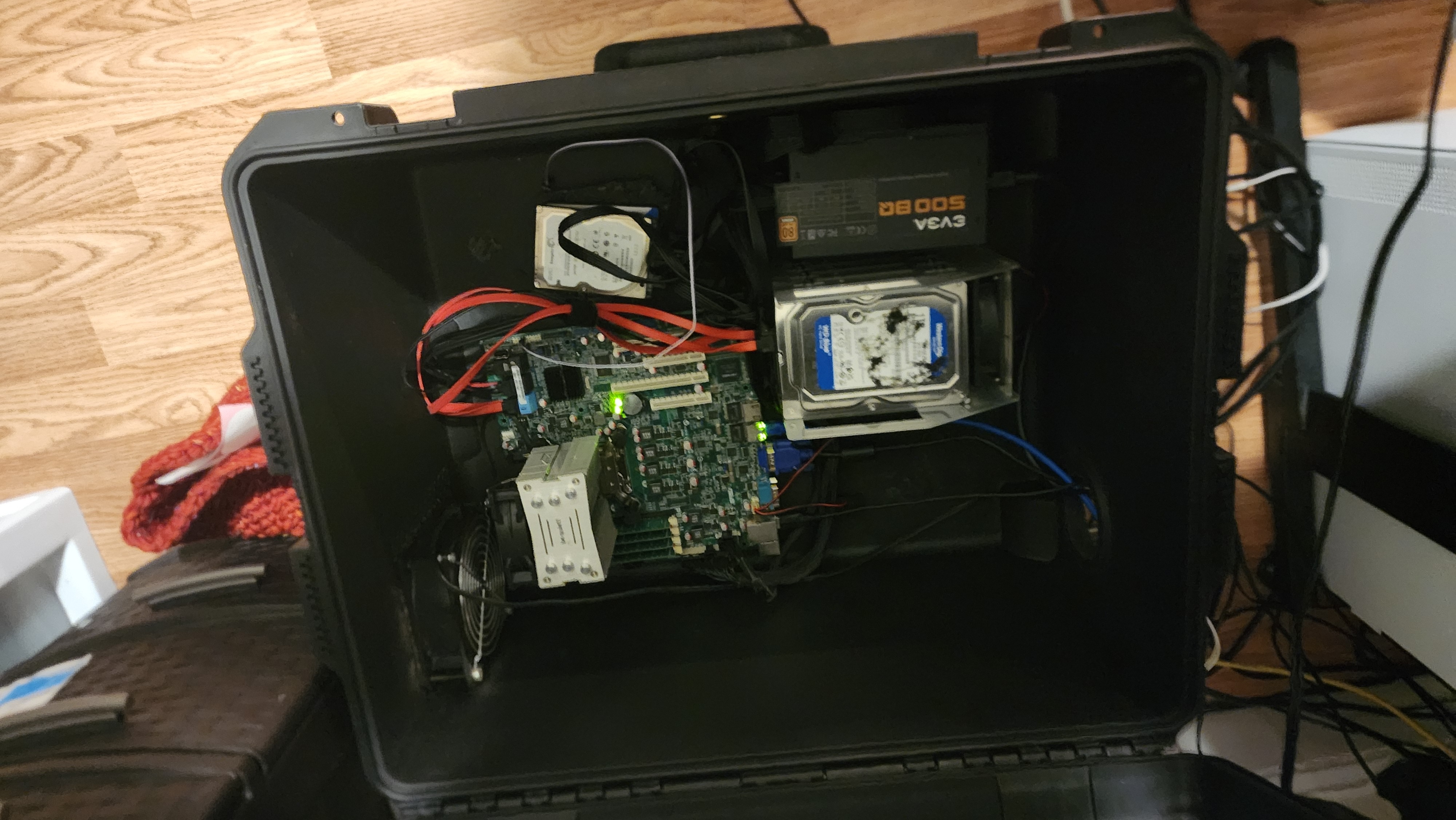
mostly runs jellyfin for a group of about 30 users (2 or 3 on at most times). runs alpine on bare bones. the box was originally filled with foam cutouts from storing iPads in a school district I worked at. I figure it's 20tbs of storage and 16gb ecc is a welcome upgrade. it stays cool cause I cutout half the side and put an AC fan in there. future upgrades involve the Nvidia k40 card I have, but I need to design an active cooling system for it before it can be installed as that thing gets HOT
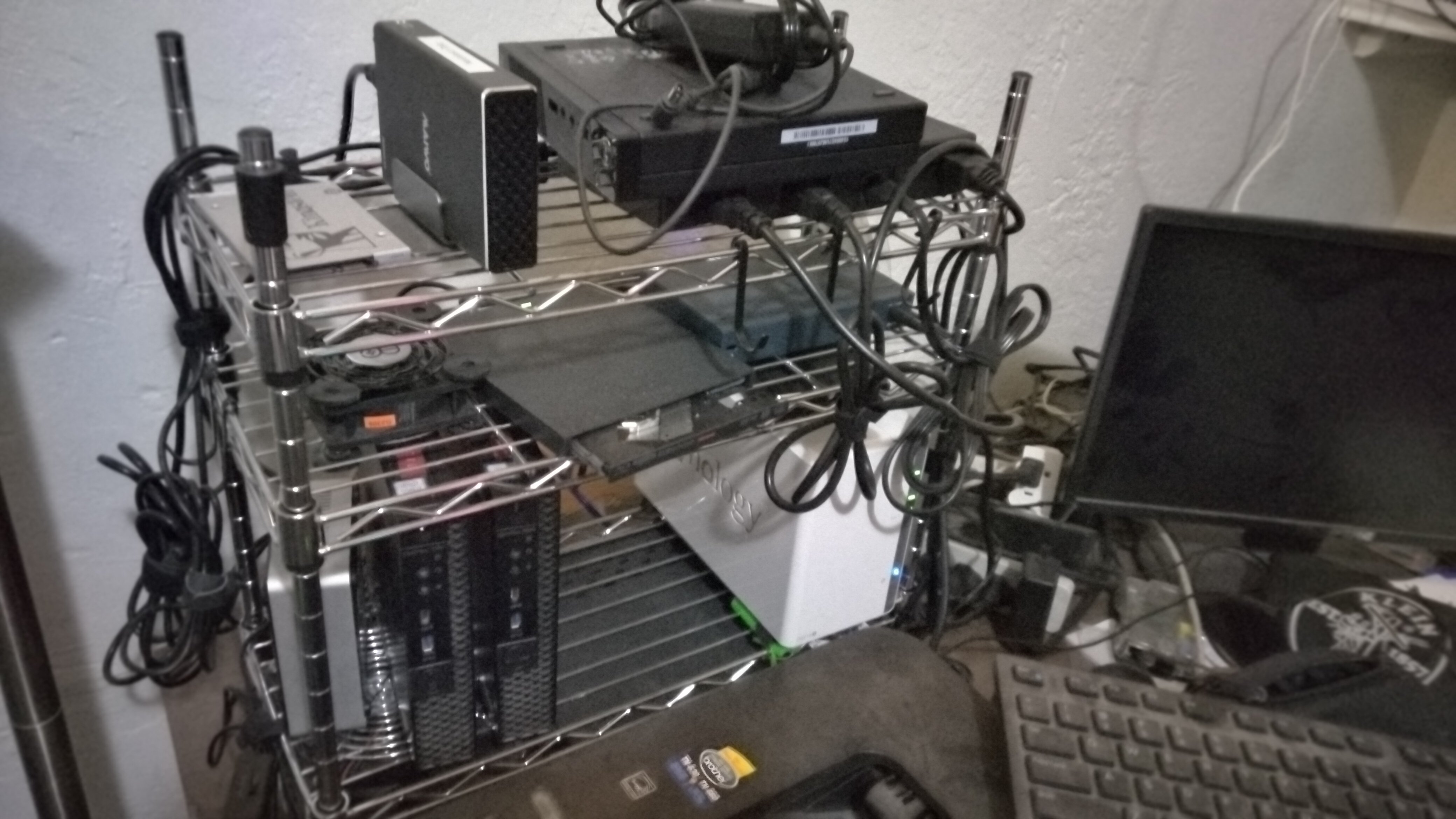
- Old Synology NAS for storage
- Optiplex 7060 running jellyfin, paperless, *arr stack, handbrake, ripper, maybe some other containers.
- NUC5 running nextcloud (nextcloudpi) baremetal and an audiobiokshelf container
lmao mine looks simple af compared with most people here.
Behold my server :

Hardware:
-
Rasberry pi 5 8GB
-
1TB raid between old drives ( one from PC the other a just a regular external WD hard drive ).
Services
- Wireguard VPN/wg-easy
- AudioBookShelf
- Freshrss
- Vaultwarden
- Navidrome
- Calibre Web
- Actual Budget
- Trilium notes
Everything in containers, if you want to know more check this blogpost.
Nothing wrong with simple! If it works for you that's all that matters!
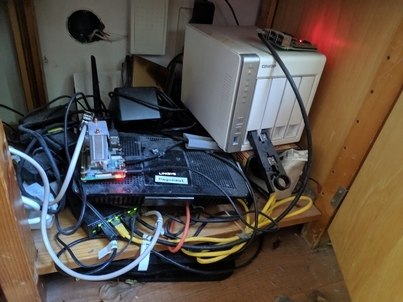
This is how I started in a tiny room. I am not proud, but maybe good to show between all the shiny things here.
Christ Almighty
 An old HP laptop with Debian hosting Klipper and Home Assistant. Waiting for an OTG cable so I could replace the laptop with a phone for less power and heat
An old HP laptop with Debian hosting Klipper and Home Assistant. Waiting for an OTG cable so I could replace the laptop with a phone for less power and heat


Running TrueNAS with 4TB usable mirrored storage, 32GB RAM, and an i5-7600. Mostly holds backed up files from my switch from Windows to NixOS. I've got it running Frigate with a Coral TPU, Gitea, Homer, Unifi Controller, and Uptime Kuma. I was managing some helm charts on the TrueNAS k3s cluster with flux but conveniently dialed back to only using their built-in apps right before they removed it in favor of docker only.
For the network I'm running OPNSense on a Protectli device with Ubiquiti Unifi for the wifi. The native WireGuard integration on OPNSense is pretty nice.
Damn, that's actually pretty sexy for a fresh-air rack How's the noise levels?
Seven Raspberry Pi 4's and one Pi Zero, mounted on some tile "shelves" inside some IKEA furniture.

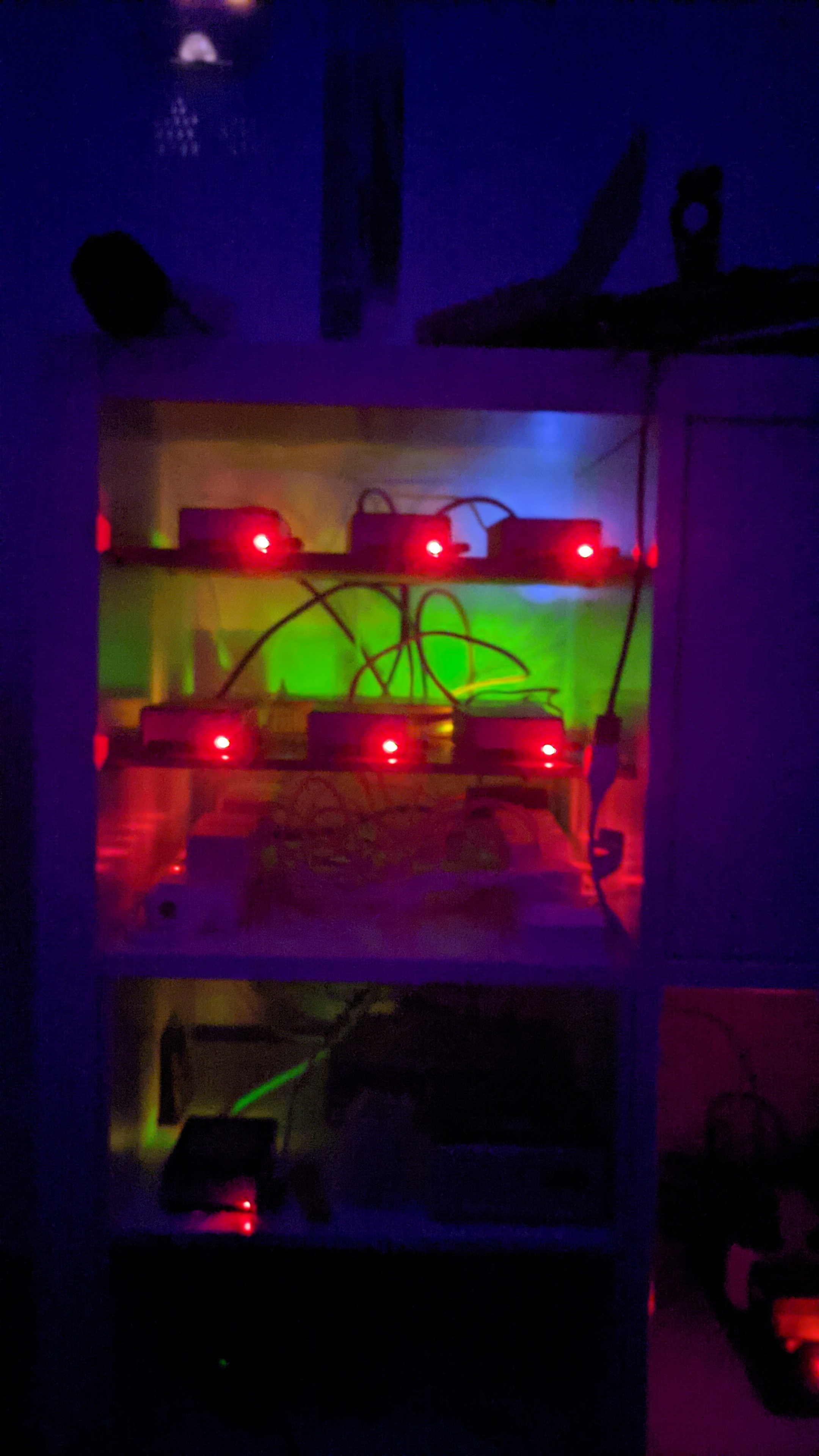

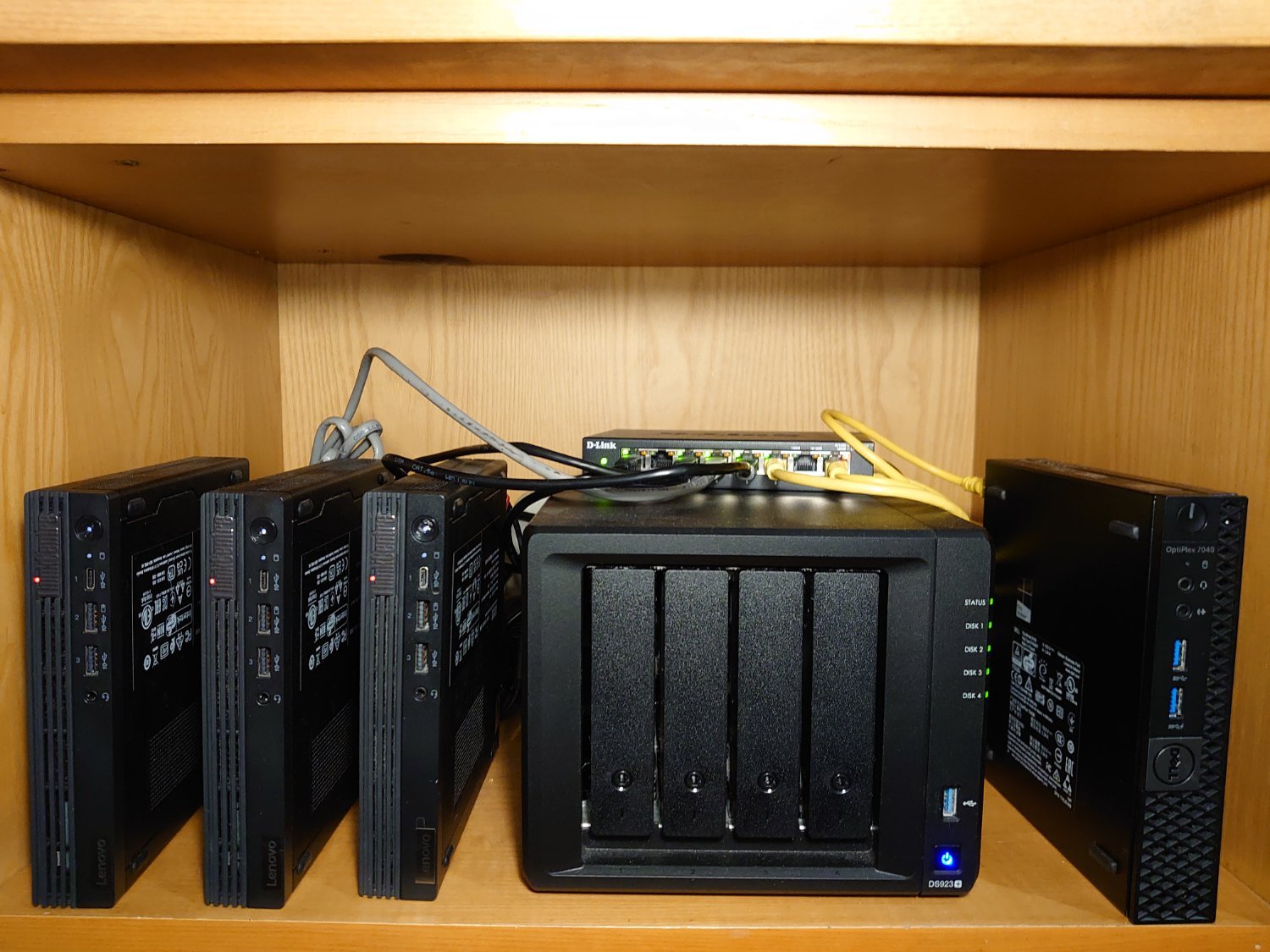
My little cluster
16TB btrfs (+ECC RAM) on Debian 12.

was going through some old pictures and decided I'd post a retro setup. pretty sure I took this picture with my android g1....so 2008ish?
here is a pic of one of my first selfhost setups. I began selfhosting for music and have never stopped. this iteration was stuffed behind a bar that was built in to the basement at my old house
the old fashioned was custom built and was running some flavor of windows server. the one on the floor was the first Linux server I had run to do something useful...torrents and subsonic IIRC. I pieced that server together with random parts, mostly donated from old family PCs. two UPS units were on the bottom rack of that metro shelf to battery back the servers and the tomato router out of frame.
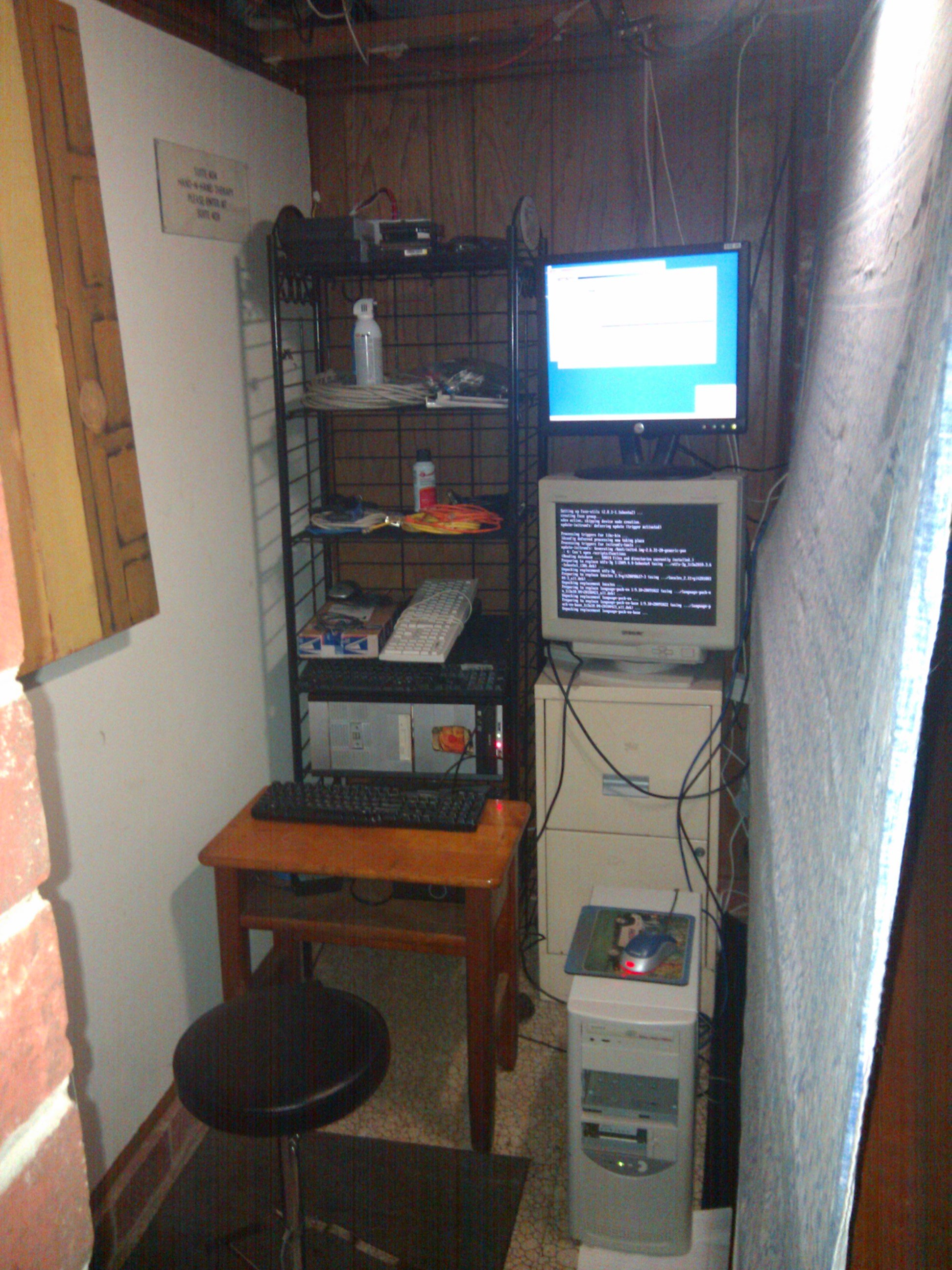
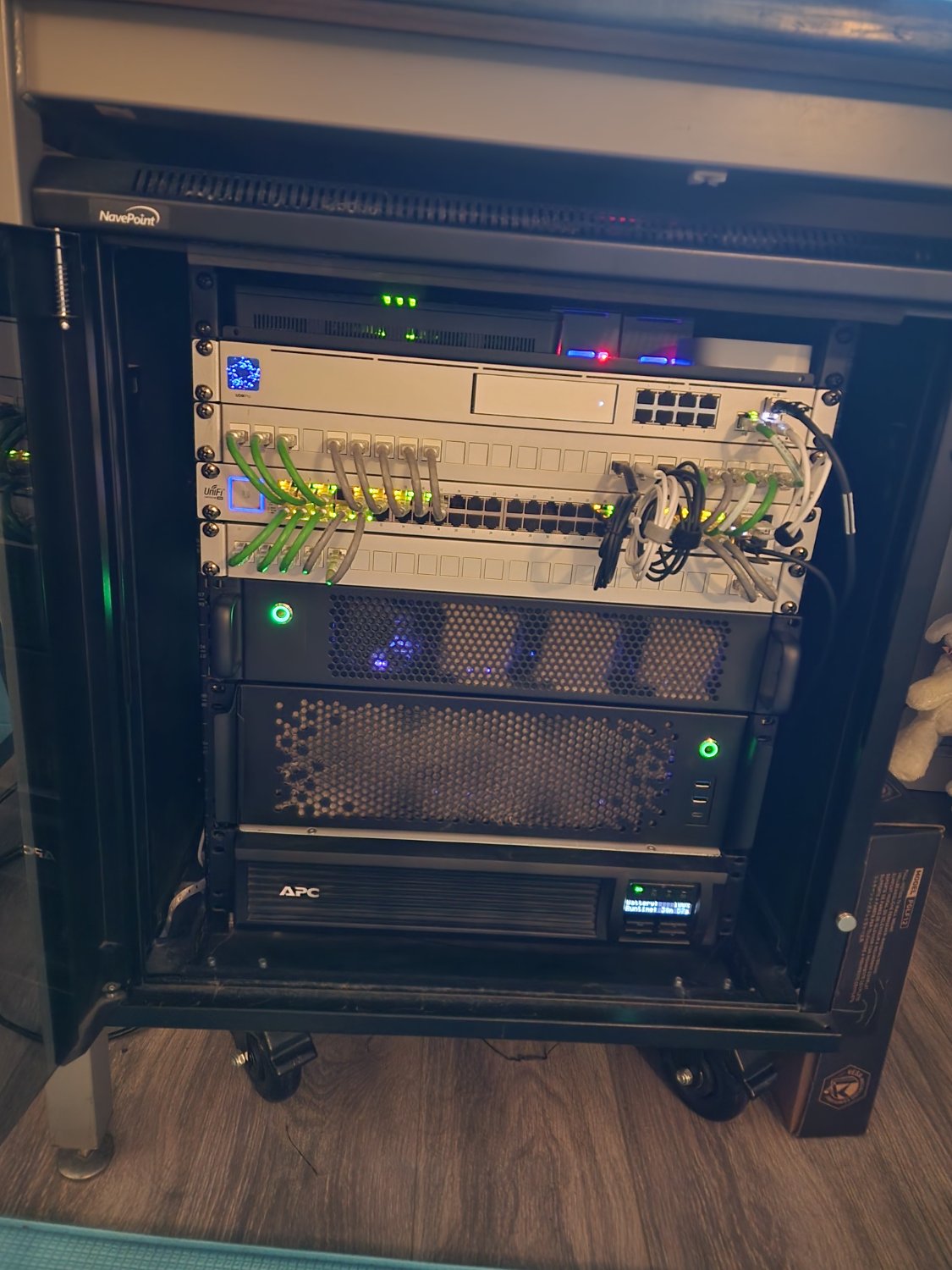
My 12u setup On top I have two pi's; home assistant and pihole The ONT for fiber, hue bridge, and hdhomerun.
My dream machine pro
Patch panel
48 port switch i got from coworker
Patch panel
My unraid server
jbod
Battery UPS
The basement network and storage/server racks.

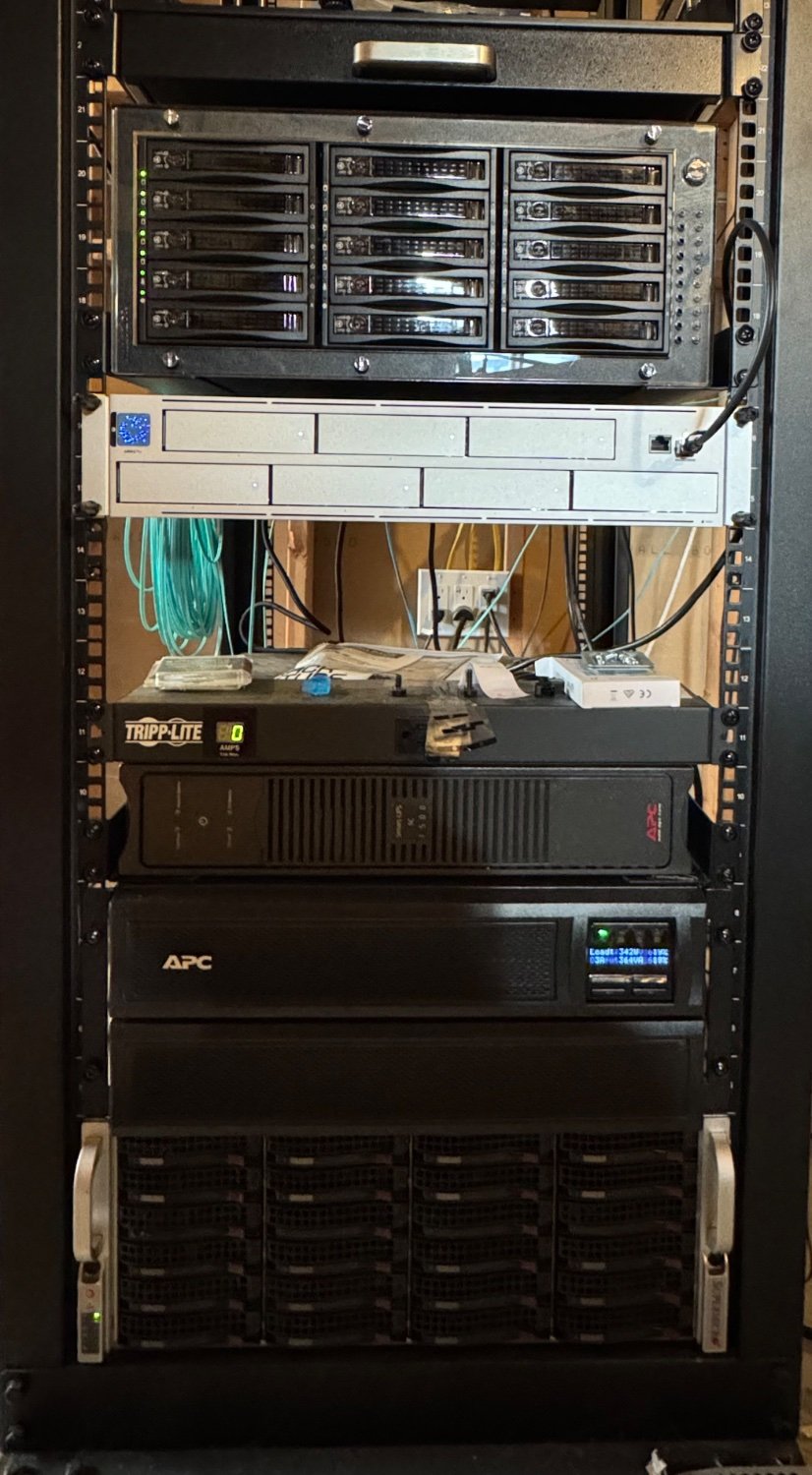
Heavy lifting boxes…


Why on earth do you have so many DVD drives. Also, are you using Windows?
Sorry to be so judgmental
I own over 4k titles in physical copies. So probably closer to 5-6k discs. As the other person said…backups. I’ve already found a few degraded discs as I’ve been working through.
Pretty much everything in the basement is some variant of linux. Couple more boxes(not pictured) higher in the rack that are just recycled desktops in rack mount cases. Some of the other stuff is windows because of the software being used. I use Mac stuff at work cause that’s what they provide. I don’t really care what OS. I just need it to work and the quickest way for me to get whatever it is done. I’ll reformat stuff to whatever when this project is done and I move on to the next.
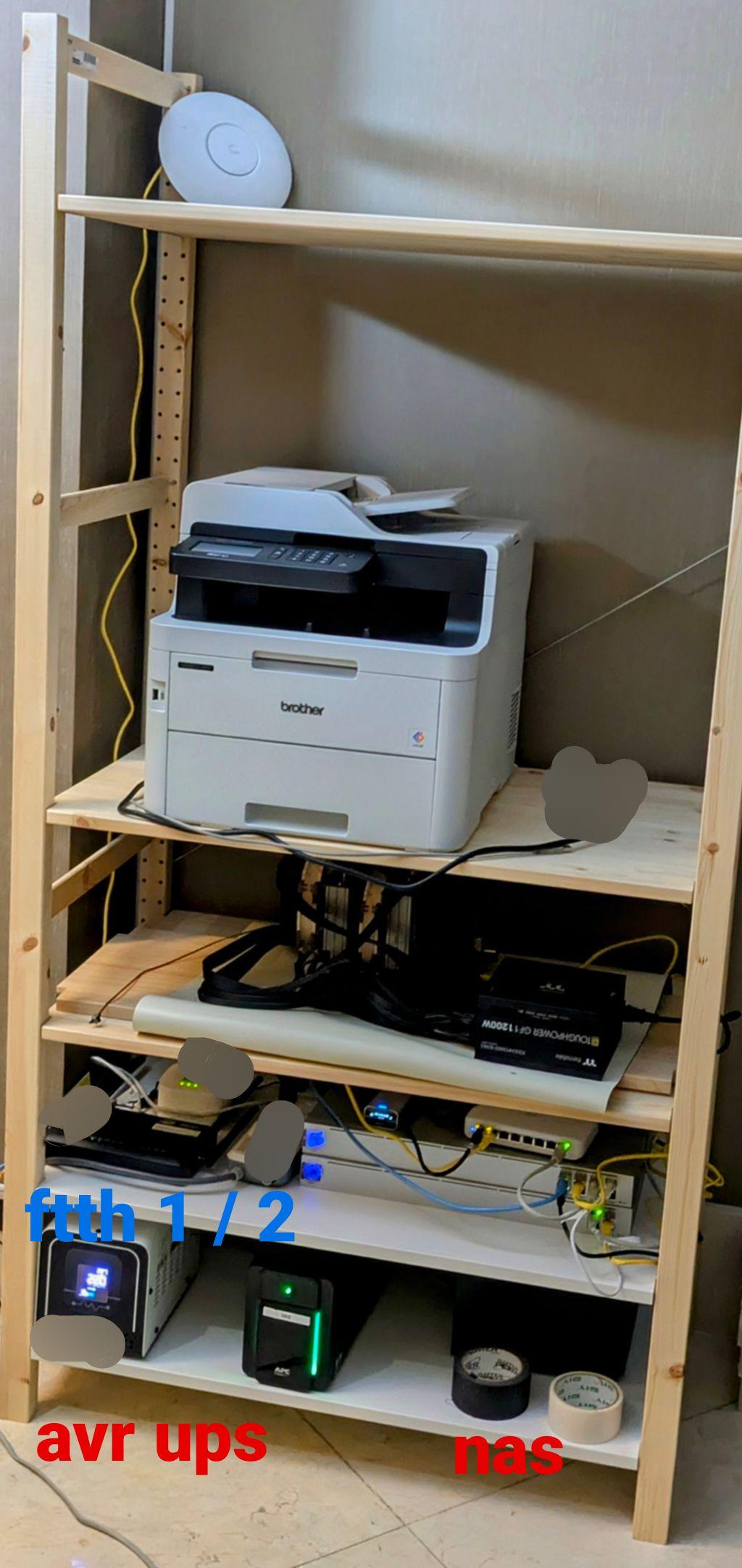
Ikea shelf instead of a rack, but I used metal shelves for better thermals!
Top to bottom:
- Unifi ac
- Brother printer
- Sunshine streaming machine
- ftth 1 / 2, unifi GW pro
- AVR, UPS, Synology NAS
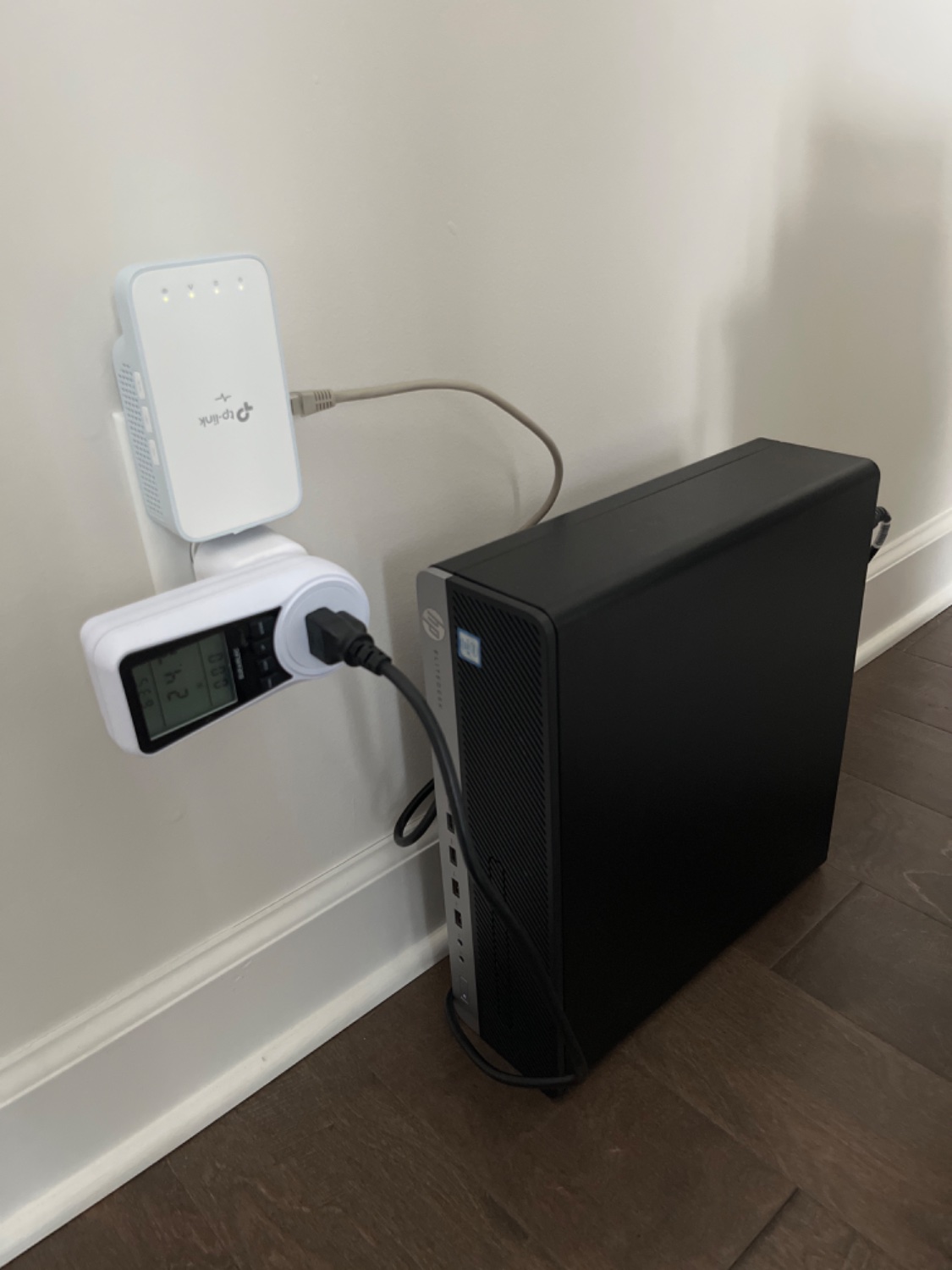
Just a NAS for now. Plan to add PiHole at some point.
Tower of Pisa would like a word with you.
Or is it just the camera angle that makes it look so tilted?
So mines a weird hodge-podge of a HP Proliant (running my modded Minecraft server and Plex) under a bistro table that I use as a standup desk. A HP Thinclient that I run lighter services like my Pi-Hole and Homebridge. and a laptop
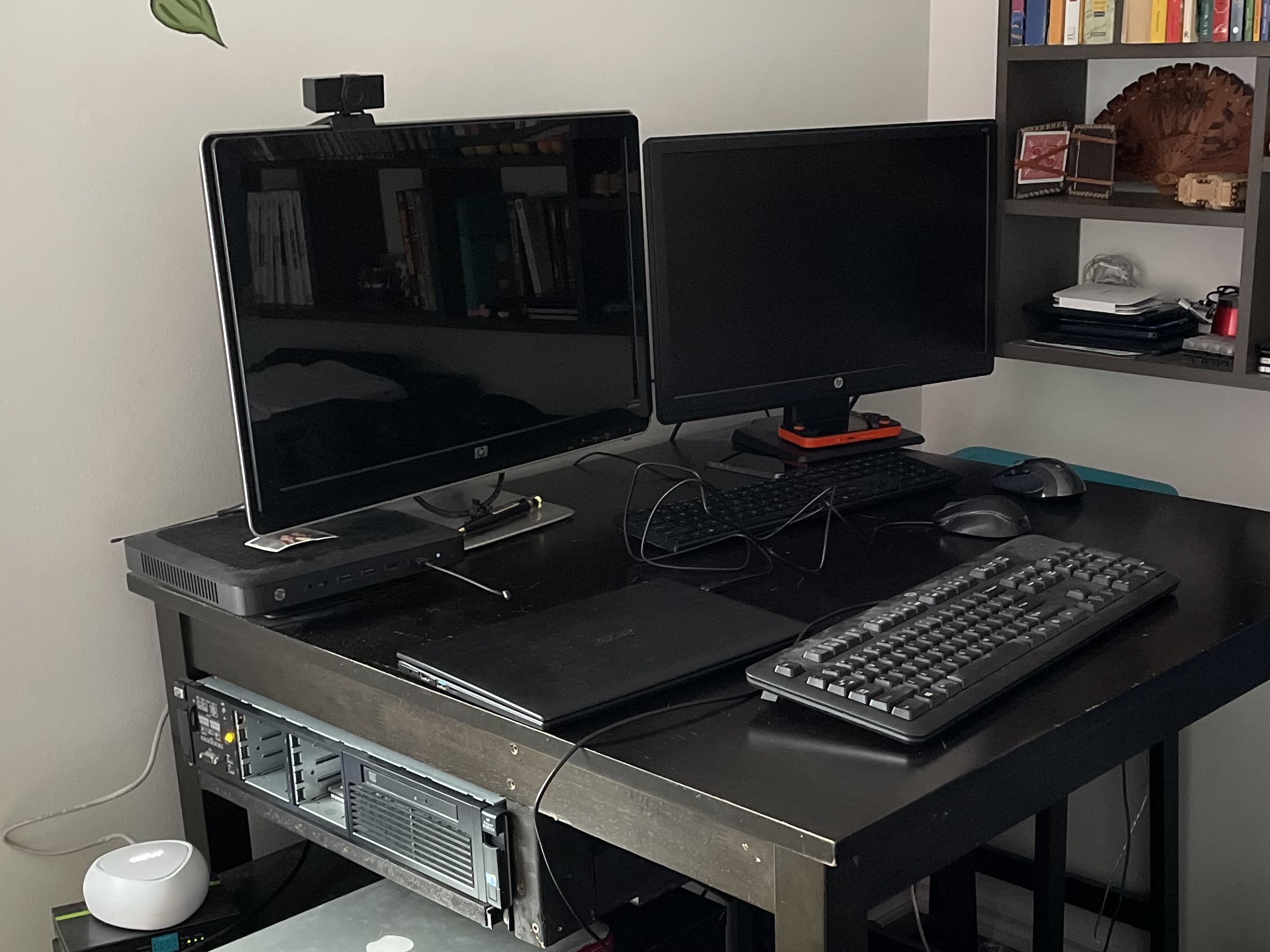
Could I interest you in some diagonal bracing today?
Old setup:
Lenovo ThinkCentre M900 that I bought refurbished for ~€130
- i5-6500T (Passmark score 4792)
- 8GB RAM
- 512GB SATA SSD + 128GB SATA SSD (completely used for swap)
- Buffalo DriveStation™ HD-WLU3 that I bought second hand for €10
- 2 × 2TB SATA HDD's in RAID 1
- ~20W
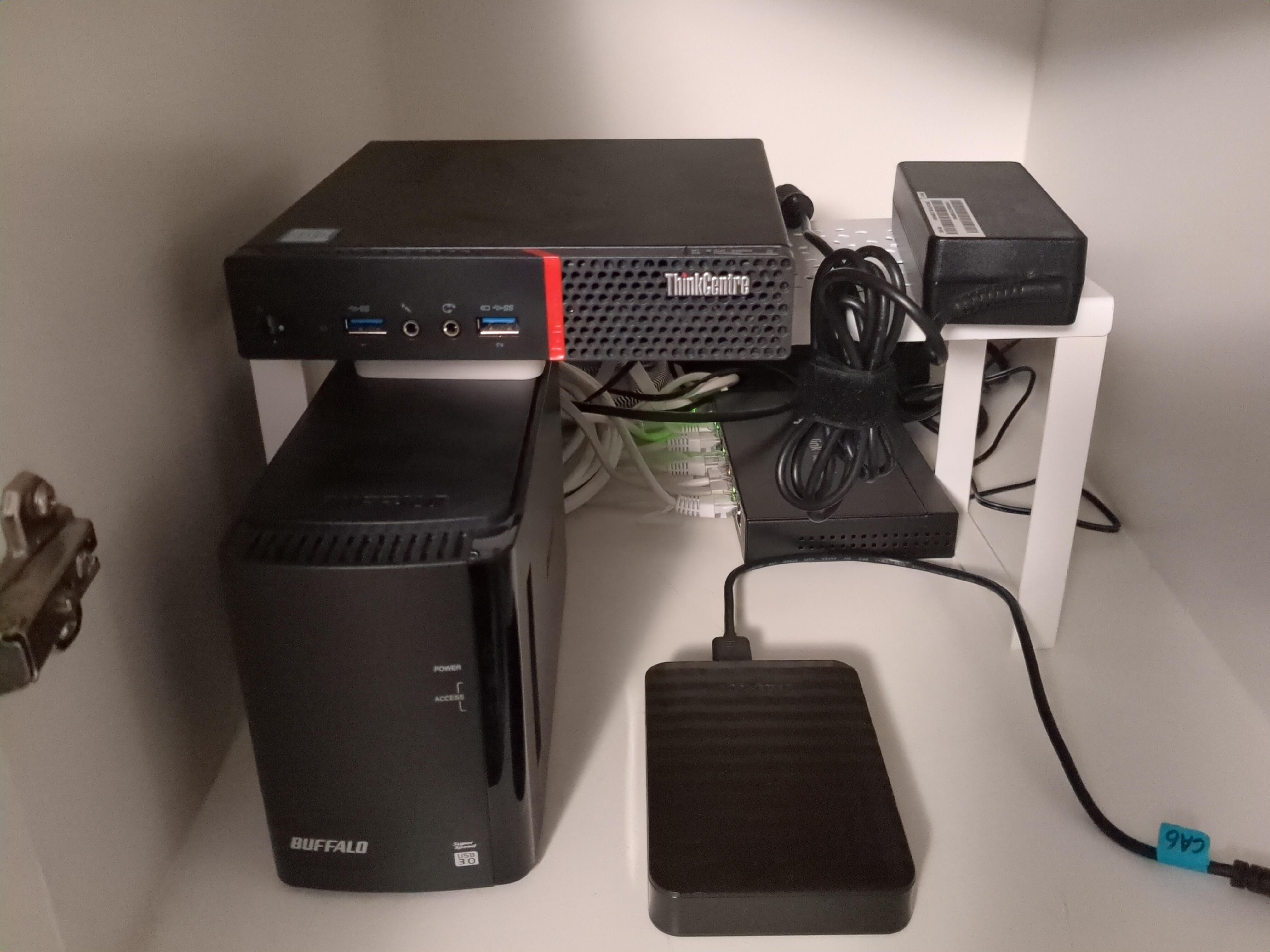
New setup:
Custom build
- ASUS Prime N100I-D D4 (Passmark score 5501) (~€100)
- 16GB RAM - Crucial CT16G4SFRA32A (€28)
- 512GB SATA SSD
- 4 × 4TB SATA HDD's in RAID 5 using mdadm (€160)
- M.2 NVME to SATA 6x (ASM1116 for C-states) (€17)
- 17.8W
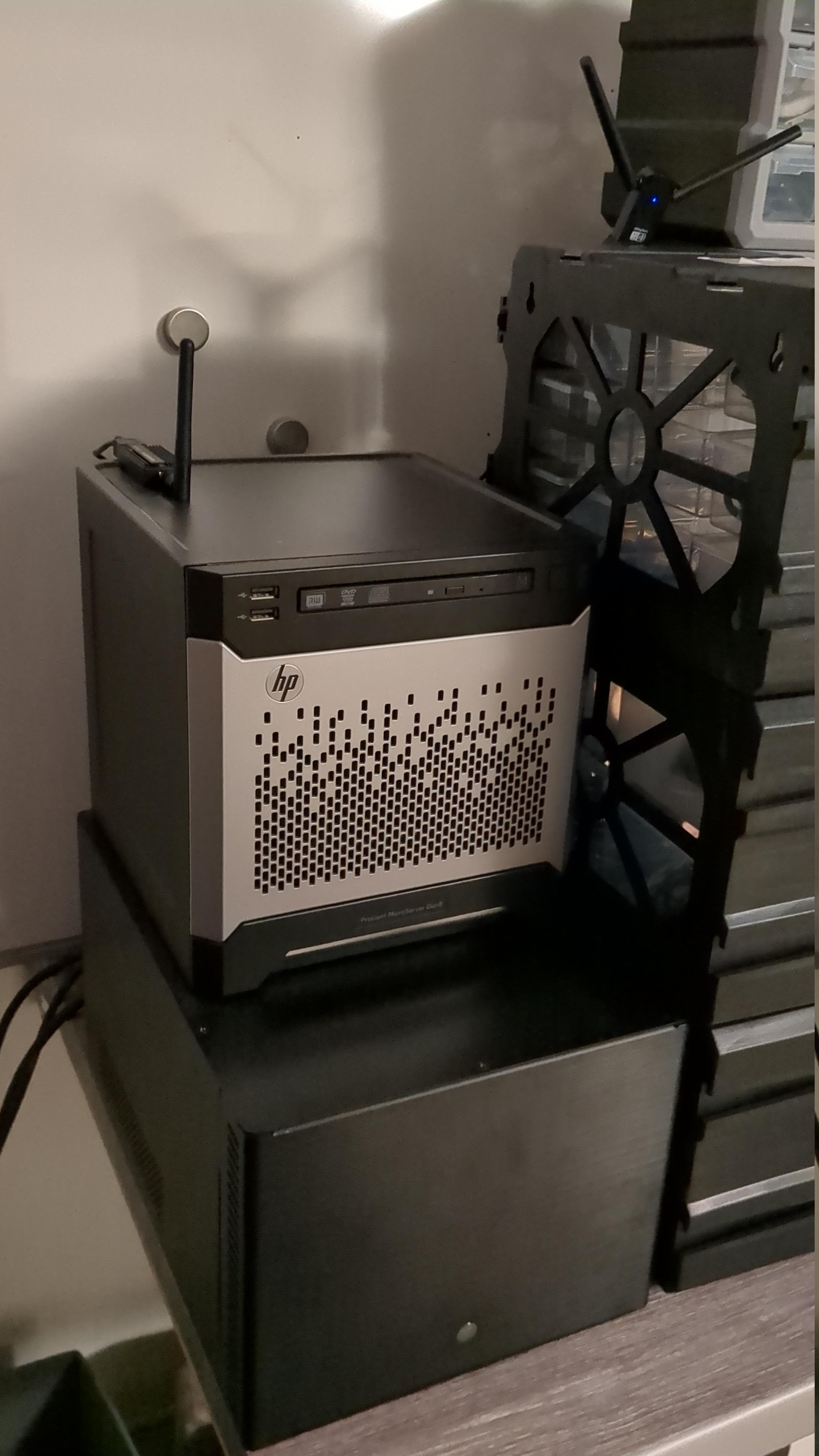
(Not the Proliant Microserver Gen8 on top, the device below)
The antennas are from a Sonoff Zigbee dongle and a bluetooth dongle for Home Assistant.
I've mostly focused on power usage, price, and reliability since I'm a student and don't want to spend a month's worth of income on a "home lab".
It's running the following:
- Forgejo
- Grafana
- Home Assistant
- Jellyfin
- Kopia
- Nginx-proxy-manager
- Paperless NGX
- Photoprism
- Syncthing
- TimescaleDB
- Uptime-kuma
- Vaultwarden: As backup
- Watch Your LAN
- Arr stack (currently disabled)
- Homebox: Still up for testing, like it has been for the past couple months. It's a great concept but the execution ain't great (does anyone happen to know an alternative?)
It's using about 10% CPU and is running below 40°.
